It looks like you're using an Ad Blocker.
Please white-list or disable AboveTopSecret.com in your ad-blocking tool.
Thank you.
Some features of ATS will be disabled while you continue to use an ad-blocker.
share:
Following the closure of part 1 of this thread, here is another which will probably be just as successful as the first.
SkepticOverlord -
Please do not lose enthusiasm just because SkepticOverlord has closed the other thread after 1401 pages, it is still very relevent to our survival and to keeping up with the shenannigans from TEPCO.
Search Part I thread for "MOX"Search Part I thread for "MOX"
SkepticOverlord -
The length of this thread has far exceeded usefulness.
If a new thread is started, please let me know and I'll link it from this thread-closed post.
Thanks.
Please do not lose enthusiasm just because SkepticOverlord has closed the other thread after 1401 pages, it is still very relevent to our survival and to keeping up with the shenannigans from TEPCO.
UPDATE
Search Part I thread for "MOX"Search Part I thread for "MOX"
edit on Tue Dec 3 2013 by DontTreadOnMe because: (no reason given)
I realise they are fighting for survival in Japan, but if people go to the Olympic games in 2020, will there still be a Japan or Tokyo to host it in
202? At the current rate of destruction and mismanagement of Fukushima, I doubt it. I do not think they have much of a chance, even if it would solve
some of their economy money problems. It would also put all of the athletes and spectators in danger and that cannot be allowed to happen.
Olympics: How Madrid has edged ahead in 2020 host city vote
Olympics: How Madrid has edged ahead in 2020 host city vote
The bookmakers' favourite is Tokyo. It also enjoys a narrow lead in the Around the Rings Olympic Bid Power Index , and Livingstone's BidIndex , two mathematical models that rank the merits of each bid. But these encouraging signs come with caveats.
“You cannot underestimate the impact a charismatic 'star turn' can make. (Madrid) has got Crown Prince Felipe...IOC members will be impressed” - Duncan Mackay insidethegames.biz
Tokyo has sound finances, good organisation and the most compact bid in terms of venues, but its campaign has seemed a little underwhelming at times, which is possibly related to concerns about the home front. The IOC is all too aware that some will always think the Games are an extravagance, which is why it likes to ensure domestic approval ratings are as high as possible at the outset.
As of a year ago, Tokyo's numbers were terrible. It has since turned that around and the latest figures show support for the Games is now at about 90%, but first impressions can stick.
As can the most recent story an IOC member has read about a country. Tokyo's bid leader Tsunekazu Takeda has spent most of the last month assuring people that the Fukushima nuclear leak is under control. Speaking in Buenos Aires on Wednesday, Takeda said: "The radiation level is absolutely safe. The 35 million people in Tokyo are living in normal conditions. There is no problem.
"Not one person in Tokyo has been affected. Tokyo and Fukushima are almost 250km apart."
Takeda is probably right, and 2020 is seven years away, but as Around the Rings' founder Ed Hula puts it, he is wrong to say it is not an issue.
"It is a risk factor the IOC has glossed over until now," said Hula.
"But if something untoward was to happen, people won't want to go. That's a problem."
Every time I went to the old thread lately it would not load properly. I think this is a good move. In fact I would assume the old thread may have
been the longest ever but I stand to be corrected.
Fukashima will be a defining moment in history. We were told that Nuclear Power was safe. Perhaps it can be, perhaps not!
What is obvious is that companies can not be trusted to do this safely while chasing $$$.
What is also obvious is that Governments can not be trusted to regulate the industry. They fail miserably.
These reactors, that is, this design is all over the world with many plants in the USA, all have the same propensity to fail during EQ or floods and all are housing huge amounts of used fuel simply because it costs huge $$$ to do otherwise.
It has been almost 2.5 years and no one has said "We have to fix this!"
There are many disasters still waiting in the wings, the human race will suffer for the greed of the corporate world.
There is no answer to Fuky, it is what it is, and no amount of money can fix it. Humanity simply does not have the tech or the knowledge.
P
Fukashima will be a defining moment in history. We were told that Nuclear Power was safe. Perhaps it can be, perhaps not!
What is obvious is that companies can not be trusted to do this safely while chasing $$$.
What is also obvious is that Governments can not be trusted to regulate the industry. They fail miserably.
These reactors, that is, this design is all over the world with many plants in the USA, all have the same propensity to fail during EQ or floods and all are housing huge amounts of used fuel simply because it costs huge $$$ to do otherwise.
It has been almost 2.5 years and no one has said "We have to fix this!"
There are many disasters still waiting in the wings, the human race will suffer for the greed of the corporate world.
There is no answer to Fuky, it is what it is, and no amount of money can fix it. Humanity simply does not have the tech or the knowledge.
P
reply to post by qmantoo
Thank you for starting this,qmantoo. Please let those that participated know.
Thank you for starting this,qmantoo. Please let those that participated know.
been over due Q so it's all good, after all i guess it is our best hope that the threads stay open as long as possible since it looks like the issues
will be around for quite a while.
Awesome idea. The old thread was all over the place. It really needed to be closed. I think all threads should have a page limit. They get way too
long and overblown. It becomes more than a chore to find anything.
I suppose I can help your thread with some fact based links and basic background material for people to go check out, if they are relatively new to
the inside detail of what happened here.
List of 600 Fukushima Photos from March 2011 (The Start)
- Sept 2012
Unit 3 Debris Removal
Unit 4
General Status Report
May - 2013
Unit 4 Fuel Removal
Unit 3 Protection
Unit 1 Cover Dismantlement
Present - Sept 2013
Groundwater Situation Report
Groundwater Radioactivity
Area Water Tanks Leakage
Technical Data for Radioactive Material Storage
List of 600 Fukushima Photos from March 2011 (The Start)
- Sept 2012
Unit 3 Debris Removal
Unit 4
General Status Report
May - 2013
Unit 4 Fuel Removal
Unit 3 Protection
Unit 1 Cover Dismantlement
Present - Sept 2013
Groundwater Situation Report
Groundwater Radioactivity
Area Water Tanks Leakage
Technical Data for Radioactive Material Storage
I'm so glad that there is a new starting place for this topic. I tried my best to keep up with the first thread, but it just got to be too much for
me to keep track of. There was such a wonderful (if that's an appropriate word) amount of information.
I really hope all of the regulars continue their thoughts/research/updates in this thread. There's still some of us out here that are concerned and appreciate everything that is brought forth.
I really hope all of the regulars continue their thoughts/research/updates in this thread. There's still some of us out here that are concerned and appreciate everything that is brought forth.
yes..this disaster that will not end
should be talked about every day.
should be talked about every day.
Thanks for creating this continuation thread. It's too bad the other one got shut down, but seeing how it had 1400+ pages I can see why! Somewhere in
those thousands of pages I had participated at one time, but to be honest compared to some of our dedicated contributors, I don't have a clue about
the situation! With that said, I'm glad to post in this one so that I can come back to it at any time and get accurate reporting on the situation. ATS
rocks..
edit on 7-9-2013 by Wookiep because: (no reason given)
Glad to see this continue!
So aside from the current ongoing concerns, the next big thing will be this November right? With the attempted removal of the spent fuel?
My daughter turns 11 October 5th. I turn 31 November 6th. Living in Alaska, I tend to hope we see birthdays after this...
Nah! Doomsaying aside I do worry greatly about this next step. From what I've read, several NRC experts feel that this would be very dangerous for the conditions Fukushima is in.
Can anyone with more knowledge give some educated speculation as to what the impact, both local to the area and across the pacific, would be if this next phase goes terribly wrong and the spent fuel ends up being dumped or otherwise released into the area and ocean?
So aside from the current ongoing concerns, the next big thing will be this November right? With the attempted removal of the spent fuel?
My daughter turns 11 October 5th. I turn 31 November 6th. Living in Alaska, I tend to hope we see birthdays after this...
Nah! Doomsaying aside I do worry greatly about this next step. From what I've read, several NRC experts feel that this would be very dangerous for the conditions Fukushima is in.
Can anyone with more knowledge give some educated speculation as to what the impact, both local to the area and across the pacific, would be if this next phase goes terribly wrong and the spent fuel ends up being dumped or otherwise released into the area and ocean?
edit on 7-9-2013 by
UnmitigatedDisaster because: (no reason given)
Link to a Reuter's article discussing the Reactor 4 fuel removal.
Reactor 4 cleanup in November
Reactor 4 cleanup in November
Tepco has already removed two unused fuel assemblies from the pool in a test operation last year, but these rods are less dangerous than the spent bundles. Extracting spent fuel is a normal part of operations at a nuclear plant, but safely plucking them from a badly damaged reactor is unprecedented.
"To jump to the conclusion that it is going to work just fine for the rest of them is quite a leap of logic," said Gundersen.
Item
Fukushima radiation leaks reach deadly new high
Exposure to emissions would be fatal within hours, say Japanese authorities
www.theguardian.com...
Justin McCurry in Tokyo
theguardian.com, Wednesday 4 September 2013 02.03 EDT
Fukushima radiation leaks reach deadly new high
Exposure to emissions would be fatal within hours, say Japanese authorities
www.theguardian.com...
Justin McCurry in Tokyo
theguardian.com, Wednesday 4 September 2013 02.03 EDT
The crippled Fukushima Daiichi nuclear power plant has radiation leaks strong enough to deliver a fatal dose within hours, Japanese authorities have revealed, as the government prepares to step in to help contain leaks of highly toxic water at the site.
On Wednesday the country's nuclear regulation authority said radiation readings near water storage tanks at the Fukushima Daiichi nuclear power plant have increased to a new high, with emissions above the ground near one group of tanks were as high as 2,200 millisieverts [mSv] per hour – a rise of 20% from the previous high.
Earlier this week the plant's operator, Tepco, said workers had measured radiation at 1,800 mSv an hour near a storage tank.
That was the previous highest reading since Tepco began installing tanks to store huge quantities of contaminated water that have built up at the plant.
An unprotected person standing close to the contaminated areas would, within hours, receive a deadly radiation dose.
www.theguardian.com...
I am pleased everyone has found the new thread. I have sent a message to Skeptic and hopefully he will place the link at the end of the other thread.
Dont forget the summary of the last 100 or so pages of old thread is here and gets updated whenever I find the time. I can also search for text in the 1400 pages if necessary too, just send me a message of what you want. The thread reference site is not up to date but still has useful links etc from the early days as well as some thumbnails of the early images too. Use the links below.
The individual links to the (old) reference pages are below since they only show a subset of those available if you arrive there NOT from ATS. They include links back to the thread pages on ATS where necessary.
Here are the links to PDF files
Here are the links to Youtube videos
Here are the links to general web pages
Here are the links to referenced images
Dont forget the summary of the last 100 or so pages of old thread is here and gets updated whenever I find the time. I can also search for text in the 1400 pages if necessary too, just send me a message of what you want. The thread reference site is not up to date but still has useful links etc from the early days as well as some thumbnails of the early images too. Use the links below.
The individual links to the (old) reference pages are below since they only show a subset of those available if you arrive there NOT from ATS. They include links back to the thread pages on ATS where necessary.
Here are the links to PDF files
Here are the links to Youtube videos
Here are the links to general web pages
Here are the links to referenced images
yes,good to start a new thread.alot of info i get about fukushima is from this blog : fukushima-diary.com... hope its ok to post the link here.
for me it has been the best source in the last year.
I wonder; did Tepco drop the ball on this? or did they / do they genuinely not realize what they're dealing with?
Not trying to be funny, but you'd think the Japanese of all people would be hypercautious around nuclear material.
Is it fixed yet?
I worry there's something in there they haven't detected yet that's going to cause problems.
good thread. Syria seems to have knocked this right off the radar.
Not trying to be funny, but you'd think the Japanese of all people would be hypercautious around nuclear material.
Is it fixed yet?
I worry there's something in there they haven't detected yet that's going to cause problems.
good thread. Syria seems to have knocked this right off the radar.
no nothing is fixed. quite on the contrary its getting worse with each hour passing.... half of the cooling water they use- seawater- goes
contaminated directly back to the sea. "30,000,000,000 Bq still leaking per day " and thats just a small part of the whole disaster
edit on
7-9-2013 by glowdog because: (no reason given)
edit on 7-9-2013 by glowdog because: tipos
A few poignant images from the mega thread. Thanks for part two Qmantoo.
Fukushima
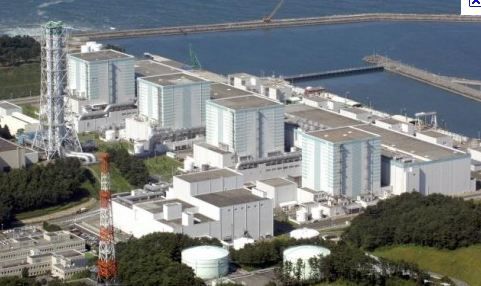
The earthquake and tsunami struck Japan on March 11, 2011.
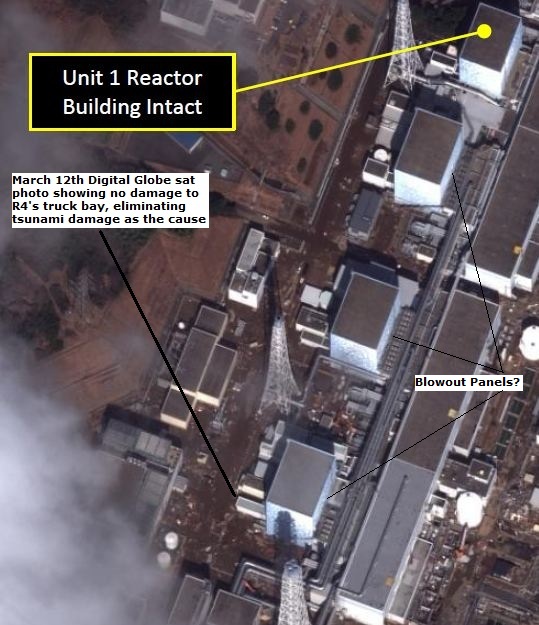
A series of declarations of nuclear emergencies and explosions after cooling was lost ensued.
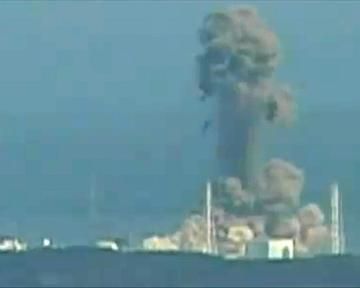
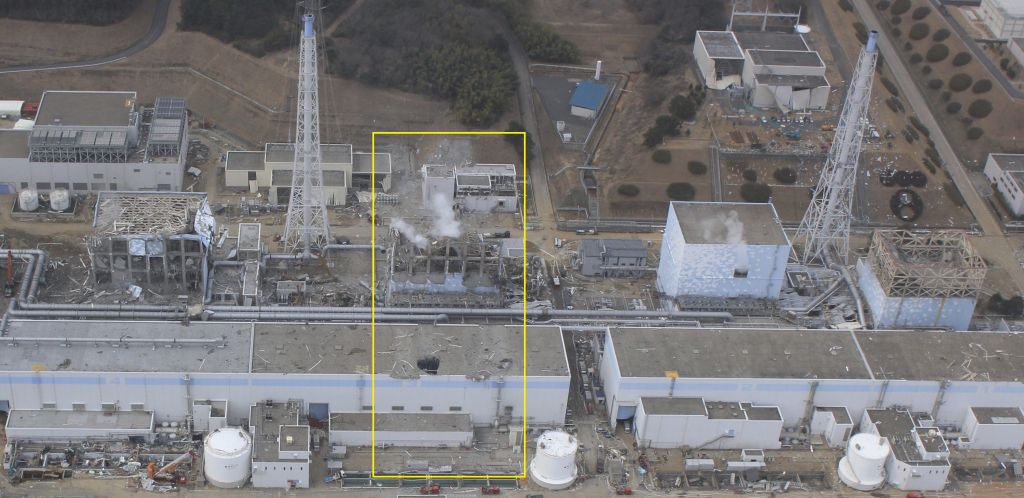
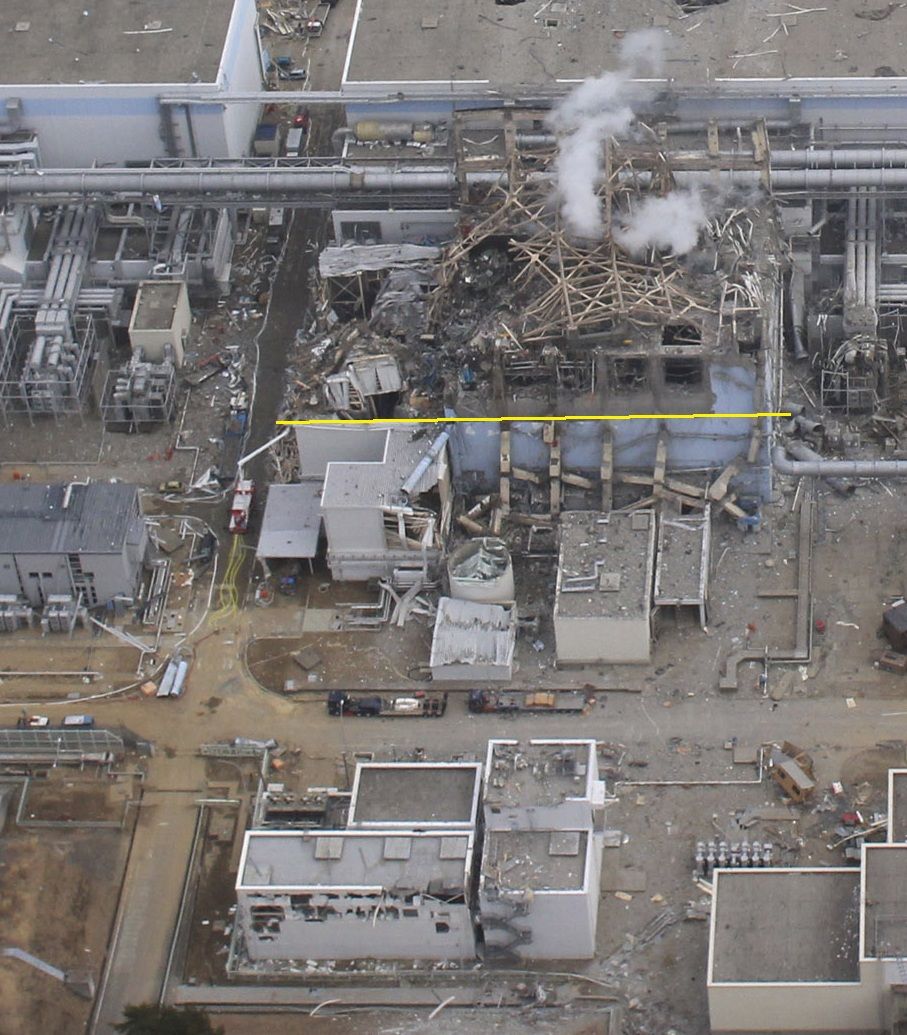
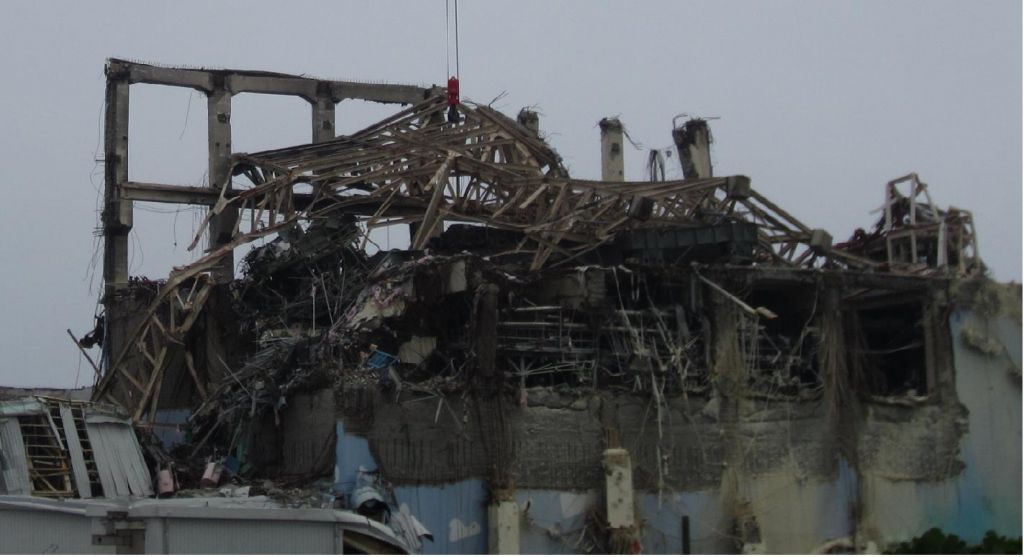
In May of 2011 Tepco admitted three nuclear meltdowns.
Source
Add to that....spent fuel pools, leaking radiated water, etc., etc., etc.
And so it continues....
Fukushima

The earthquake and tsunami struck Japan on March 11, 2011.

A series of declarations of nuclear emergencies and explosions after cooling was lost ensued.




In May of 2011 Tepco admitted three nuclear meltdowns.
Tepco had revealed that rods at its Number 1 reactor melted down. It was thought that a similar problem had occurred in the other reactors but it was difficult to confirm.
"Based on our analysis, we have reached the conclusion that a certain amount of nuclear fuel has melted down," Ken Matsuda, a Tepco spokesman told the BBC.
He said the analysis came from a report that Tepco was required to submit to Japan's Nuclear and Industrial Safety Agency (Nisa).
The spokesman added that most of the fuel from the Number 2 reactor had melted approximately 100 hours after the earthquake, which measured 9 on the Richter scale, struck Japan.
The meltdown in the Number 3 reactor took place about 60 hours after the quake.
Source
Add to that....spent fuel pools, leaking radiated water, etc., etc., etc.
And so it continues....
I assume turning the reactor off isn't an option. I keep thinking of a machine zooming around with its power button stuck.
Originally posted by UnmitigatedDisaster
Link to a Reuter's article discussing the Reactor 4 fuel removal.
Reactor 4 cleanup in November
Tepco has already removed two unused fuel assemblies from the pool in a test operation last year, but these rods are less dangerous than the spent bundles. Extracting spent fuel is a normal part of operations at a nuclear plant, but safely plucking them from a badly damaged reactor is unprecedented.
"To jump to the conclusion that it is going to work just fine for the rest of them is quite a leap of logic," said Gundersen.
Thanks for that link. People should read it. Arnie Gunderson is a qualified source to speak on the issues at Fukushima. More from the link...
The process will begin in November and Tepco expects to take about a year removing the assemblies, spokesman Yoshikazu Nagai told Reuters by e-mail. It's just one installment in the decommissioning process for the plant forecast to take about 40 years and cost $11 billion.
Each fuel rod assembly weighs about 300 kilograms (660 pounds) and is 4.5 meters (15 feet) long. There are 1,331 of the spent fuel assemblies and a further 202 unused assemblies are also stored in the pool, Nagai said.
They have removed two unused fuel rod assemblies so far? Whoopee, two years on and billions of dollars and they are creeping along. Stay tuned on the projections for how much this is going to cost and how long it will take.
The safety issues are enormous like Gunderson says. Pulling damaged, volatile "spent" fuel rods from the cracked, leaking, vulnerable to more tremblers pool, is about the scariest scenario I can imagine. Each of these assemblies (a bundle of fuel rods similar in a appearance to a bundle of pencils) weighing over 600 pounds, made of the most dangerous stuff on the planet, that can catch fire and "fission" in the open air if they drop it or bump it against a wall.
Only 1329 more bundles to go. In that pool, in that reactor building.
Also of note is they removed the undamaged, unused fuel rods first. They can still use them in another reactor. So the choice to act upon the danger was to rescue the money first.
new topics
-
Watch as a 12 million years old Crab Emerges from a Rock
Ancient & Lost Civilizations: 1 hours ago -
ILLUMINATION: Dimensions / Degrees – Da Vincis Last Supper And The Philosophers Stone
Secret Societies: 7 hours ago -
Just Sick of It! Done! Can't take it anymore!
General Chit Chat: 8 hours ago -
Speaking of Pandemics
General Conspiracies: 10 hours ago -
Stuck Farmer And His Queue Jumping Spawn
Rant: 10 hours ago
top topics
-
Speaking of Pandemics
General Conspiracies: 10 hours ago, 8 flags -
ILLUMINATION: Dimensions / Degrees – Da Vincis Last Supper And The Philosophers Stone
Secret Societies: 7 hours ago, 7 flags -
Watch as a 12 million years old Crab Emerges from a Rock
Ancient & Lost Civilizations: 1 hours ago, 7 flags -
Just Sick of It! Done! Can't take it anymore!
General Chit Chat: 8 hours ago, 5 flags -
Stuck Farmer And His Queue Jumping Spawn
Rant: 10 hours ago, 4 flags
active topics
-
Watch as a 12 million years old Crab Emerges from a Rock
Ancient & Lost Civilizations • 5 • : DAVID64 -
Nigel Farage's New Year Message.
Politicians & People • 24 • : gortex -
Musk calls on King Charles III to dissolve Parliament over Oldham sex grooming gangs
Mainstream News • 167 • : angelchemuel -
Candidate Harris Supporter MARK CUBAN Says Trump Has No Smart-Intelligent Women in His Orbit.
2024 Elections • 84 • : Oldcarpy2 -
Undiagnosed China Pneumonia Reported
Diseases and Pandemics • 48 • : AdultMaleHumanUK -
-@TH3WH17ERABB17- -Q- ---TIME TO SHOW THE WORLD--- -Part- --44--
Dissecting Disinformation • 3939 • : Thoughtful3 -
DONALD J. TRUMP - TIME's Most Extraordinary Person of the Year 2024.
Mainstream News • 60 • : xuenchen -
Meta Llama local AI system is scary good
Science & Technology • 35 • : Arbitrageur -
Winter Storm
Fragile Earth • 29 • : Flyingclaydisk -
Joe Biden gives the USA's Highest Civilian Honor Award to Hillary Clinton and George Soros.
US Political Madness • 36 • : Flyingclaydisk
